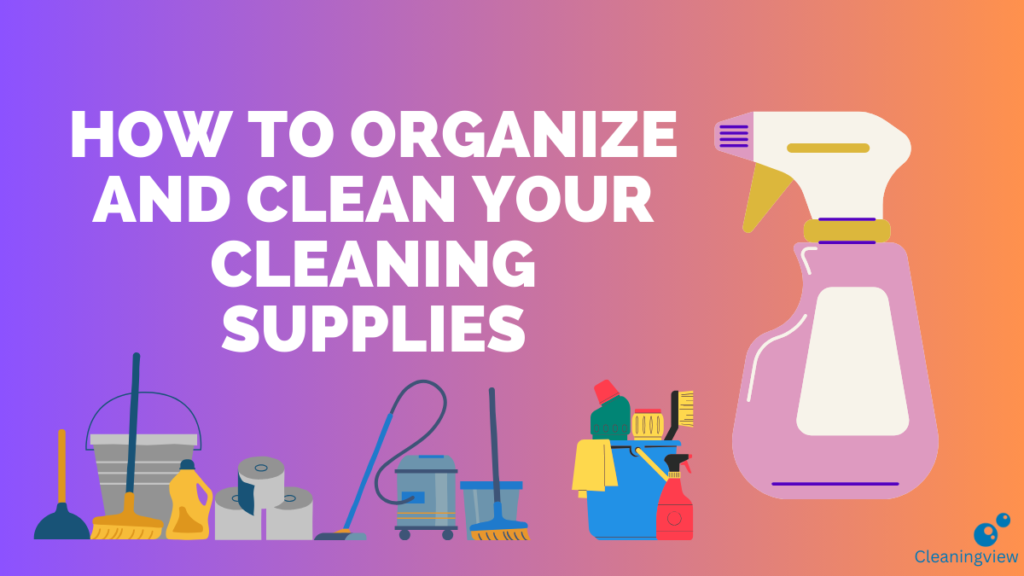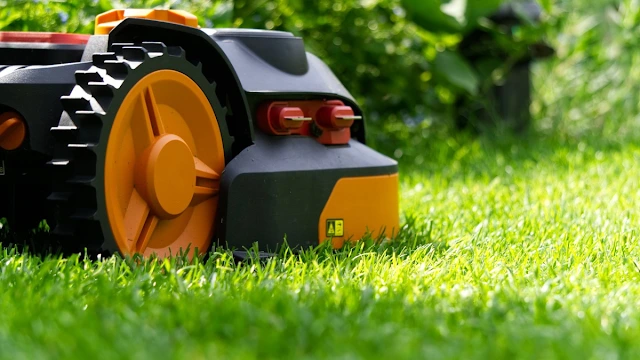
Discover how to effectively organize and clean your cleaning supplies with our detailed step-by-step guide. Learn tips for decluttering, safe storage, and maintaining your tools for a more efficient and eco-friendly cleaning routine.
Introduction
Cleaning your home can be a breeze if you have everything you need in the right place. But what happens when your cleaning supplies are scattered, hard to find, or worse, dirty themselves? That’s where organizing and cleaning your cleaning supplies comes in. It’s not just about making your space look tidy; it’s about ensuring that your tools are ready to do their job effectively.
Why Organizing and Cleaning Your Supplies is Essential
When your cleaning supplies are organized, you save time and energy. No more rummaging through a cluttered closet or under the sink to find that one cleaner you need. Plus, keeping your supplies clean ensures they work well and last longer. A well-maintained mop, for instance, cleans floors better than one that’s dirty and frayed.
Common Issues with Disorganized Cleaning Supplies
Without proper organization, you might find yourself buying duplicates of items you already have or forgetting about products until they’ve expired. Disorganized supplies can also lead to safety hazards, especially if chemicals are stored improperly. It’s easy for spills to happen or for dangerous mixtures to occur when things are in disarray.
Step 1: Assess Your Current Inventory
The first step to organizing and cleaning your cleaning supplies is to know what you have. This might seem obvious, but many people have no idea just how many cleaning products they’ve accumulated over time.
Take Stock of What You Have
Start by pulling out all your cleaning supplies from their hiding places. Lay everything out where you can see it. This will give you a clear picture of what you’re working with.
Identify Duplicates and Expired Products
As you go through your supplies, check for duplicates. Do you really need three bottles of glass cleaner? Also, look at expiration dates. Yes, cleaning products do expire! Expired products might not work as well and could even be unsafe to use.
Step 2: Declutter Your Cleaning Supplies
Now that you know what you have, it’s time to declutter. This step is all about getting rid of what you don’t need.
Discard Expired or Unnecessary Items
Throw away any products that are past their prime. If you have items that you never use, consider why that is. If they’re not serving a purpose, it’s time to let them go.
Donate or Repurpose Unused Products
If you have unopened, unexpired products that you don’t need, consider donating them to a local shelter or community center. Some cleaning supplies can also be repurposed. For example, an old toothbrush makes a great tool for scrubbing small crevices.
Step 3: Categorize Your Cleaning Supplies
With the clutter gone, it’s time to categorize what’s left. Grouping your supplies in a way that makes sense to you will make it easier to find what you need when you need it.
Grouping by Function
One way to categorize your supplies is by function. Keep all your bathroom cleaners together, all your floor care products in one spot, and so on. This way, when you’re cleaning a specific area of your home, you can grab everything you need at once.
Grouping by Frequency of Use
Another approach is to group items by how often you use them. Everyday essentials like all-purpose cleaners and sponges should be kept within easy reach. Seasonal or specialty items can be stored in a less accessible spot.
Step 4: Choose the Right Storage Solutions
Now that your supplies are grouped, you’ll need to find a home for them. The right storage solutions can make a world of difference in keeping your cleaning supplies organized and easy to access.
Storage Bins and Caddies
Consider using storage bins or caddies to keep your supplies together. A caddy is especially handy for items you use frequently. You can carry it from room to room as you clean, making your job easier.
Shelving Units and Racks
If you have the space, shelving units or racks are great for keeping everything visible and off the floor. Adjustable shelves allow you to customize the space to fit your supplies perfectly.
Utilizing Under-Sink Space
The space under your sink is prime real estate for storing cleaning supplies. Use stackable bins or tension rods to maximize this often-overlooked area. Just be sure to keep dangerous chemicals out of reach if you have children or pets.
Step 5: Create a Cleaning Supply Station
Having a dedicated space for your cleaning supplies can streamline your cleaning routine. This doesn’t have to be a large area—just a small section of a closet or a spot in your laundry room will do.
Benefits of a Dedicated Space
When all your cleaning supplies are in one place, you won’t waste time hunting them down. It also makes it easier to see when you’re running low on something, so you can restock before you run out.
How to Set Up an Efficient Station
Set up your station in a way that makes sense for your routine. Keep your most-used items front and center. Store heavier items on lower shelves and lighter ones up top. And don’t forget to leave a little space for growth—this will help prevent clutter from building up again.
Step 6: Label Everything
Labeling might seem like overkill, but it’s a small step that can make a big difference. When everything is labeled, you know exactly where it goes, and so does everyone else in your household.
Why Labels Matter
Labels take the guesswork out of where things belong. They also make it easier to maintain your organization system because there’s no excuse for not putting things back where they came from.
Best Practices for Labeling
Use clear, easy-to-read labels. You can buy pre-made labels or create your own with a label maker. If you prefer a more temporary solution, use sticky notes or painter’s tape until you’re sure your system works for you.
Step 7: Maintain Your Organized Supplies
Once your supplies are organized, the key to keeping them that way is maintenance. Regular checks and cleaning will keep everything in good condition and ready to use.
Regular Inventory Checks
Make it a habit to check your inventory regularly. This will help you avoid running out of essential items and prevent you from buying things you don’t need.
Routine Cleaning of Supplies and Storage Areas
Your cleaning supplies need cleaning, too! Wipe down bottles, wash out caddies, and sweep or vacuum storage areas. This will prevent dust and grime from building up and keep your supplies in top shape.
Step 8: Properly Clean Your Cleaning Tools
Your cleaning tools do the dirty work, so they deserve a little TLC. Properly cleaning your tools will extend their life and keep them working effectively.
How to Clean Mops, Brooms, and Brushes
Mops should be washed after each use and allowed to dry completely to prevent mildew. Brooms can be cleaned by removing any trapped debris and occasionally washing the bristles. Brushes should be rinsed thoroughly and left to dry to prevent bacteria buildup.
Maintaining Vacuum Cleaners and Other Equipment
Vacuum cleaners need regular maintenance to perform at their best. Empty the dustbin or replace the bag frequently, clean the filters, and check the brush roll for tangled hair or threads. Other equipment, like steam cleaners or floor polishers, should be cleaned according to the manufacturer’s instructions.
Step 9: Safe Storage of Cleaning Chemicals
Safety is a top priority when it comes to storing cleaning chemicals. Proper storage prevents accidents and keeps your home safe.
Importance of Safety
Many cleaning products contain chemicals that can be harmful if not stored properly. This is especially important if you have children or pets who might accidentally get into your supplies.
Best Practices for Storing Hazardous Materials
Always store hazardous materials in their original containers with the labels intact. Keep them in a cool, dry place away from food and out of reach of children and pets. Consider using childproof locks on cabinets where dangerous chemicals are stored.
Step 10: Eco-Friendly Cleaning Supply Management
Managing your cleaning supplies in an eco-friendly way benefits both your home and the environment.
Choosing Sustainable Products
Opt for cleaning products that are biodegradable, non-toxic, and made from renewable resources. There are plenty of eco-friendly options available that work just as well as their conventional counterparts.
How to Dispose of Old Chemicals Responsibly
When it’s time to dispose of old cleaning products, do so responsibly. Never pour chemicals down the drain or throw them in the trash. Check with your local waste management facility for guidelines on how to dispose of hazardous materials safely.
Conclusion
Keeping your cleaning supplies organized and clean is a simple but powerful way to improve your cleaning routine. By taking the time to declutter, categorize, and properly store your supplies, you’ll make your cleaning tasks easier and more efficient. Regular maintenance and safe storage practices will ensure that your supplies are always ready to tackle the job.
FAQs: Organize and Clean Your Cleaning Supplies
Q: How often should I clean my cleaning supplies?
It’s a good idea to clean your cleaning tools after each use to prevent the spread of germs and keep them in good working condition. For larger items like vacuum cleaners, aim to clean them monthly.
Q: What’s the best way to store cleaning chemicals?
Store cleaning chemicals in a cool, dry place, away from food and out of reach of children and pets. Keep them in their original containers with the labels intact.
Q: How can I make my cleaning routine more eco-friendly?
Choose biodegradable, non-toxic cleaning products, and try to use less water when cleaning. Also, consider using reusable cloths and mops instead of disposable ones.
Q: Should I label all my cleaning supplies?
Labeling your cleaning supplies can help keep things organized and make it easier for everyone in your household to find and put away items. It’s especially useful if you have a lot of different products.
Q: What are the risks of not organizing my cleaning supplies?
Disorganized cleaning supplies can lead to accidental spills, safety hazards, and wasted money on duplicate purchases. Proper organization helps prevent these issues and makes your cleaning routine more efficient.
Read More
https://cleaningview.ca/the-best-reusable-cleaning-tools-for-a-zero-waste-home/
Important: The information provided here in the post is for general informational purposes only. It should not be taken as professional or any other type of advice. Always seek the advice of a qualified professional before implementing this information on your own. Thank you!
Add CleaningView To Your Google News Feed


